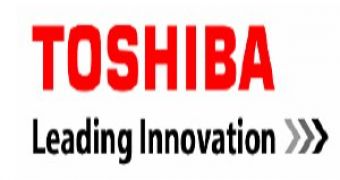Japan's Toshiba Corp. has recently announced that it has made all the preparations for rolling out the 45/40 nanometer logic process. Toshiba is supposed to have Sony Corp. as a first customer for the new technology, but there are no signs yet that the process could start. According to the company, Sony was supposed to deliver to Toshiba a 45-nm model of its graphics engine used in the PlayStation 3 game console. The company also says that the customer seems to be a little late with the 45-nm version, which should be manufactured on a foundry basis by Toshiba.
Toshiba also stated that it started shipping the 65-nm logic process quite a while ago, and that it had already made the step forward with the fabrication process. According to Masakazu Kakumu, corporate vice president and vice president of the System LSI Division at Toshiba Semiconductor Co., the company has also entered the “pilot line”' production with the 40-nm, high-performance logic process.
The Toshiba executive also said that the 40-nm, high-performance logic process was completed and that the move to a low-power version was planned for sometime in mid-2009. Sony, which was said to be the first customer for the high-performance process, seems to be a bit tardy in providing the company with a design for its graphics engine.
“We are waiting for the graphics engine from Sony,” Masakazu Kakumu said during a brief interview at the 5th ISMI Symposium on Manufacturing Effectiveness, which is sponsored by Sematech. However, Kakumu did not offer further details.
Toshiba processes 65- and 40-nm chips at two main 300-mm logic fabs it owns in Nagasaki and Oita. In 2007, Sony sold and transferred to Toshiba the 300-mm wafer line fabrication facilities it had in Fab 2 of Sony Semiconductor Kyushu Corp.'s Nagasaki Technology Center. Toshiba said that it would start the manufacturing process at 65-nm, and that the joint venture would also involve its system LSI manufacturing operation in Oita, with the purpose of shifting to the 45-nm process mass production.

 14 DAY TRIAL //
14 DAY TRIAL //